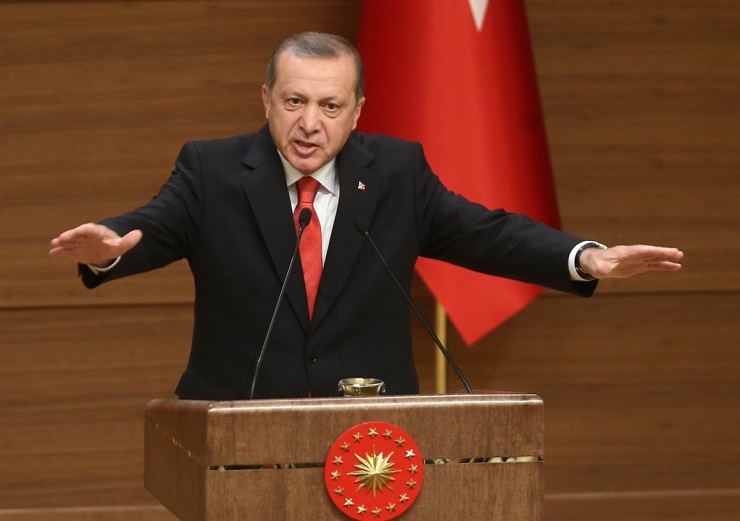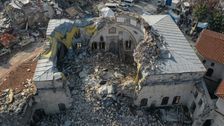Under the leadership of Recep Tayyip Erdoğan, claiming the role of a new regional superpower, Turkey has been increasingly active in recent decades pursuing an independent foreign policy with an attempt to position itself as the key state of the so-called “Afrasia,” that is, as a link between Africa, Asia, and Europe. Recently the Turkish president has been actively trying to build the alliance of Turkic, or, if Hungary were to be included, Turanian states, which, in particular, was demonstrated by the Eighth Summit of the Organization of Turkic States (Turkic Council) held in Istanbul on November 12. In this context, it is noteworthy that at the summit, there was a clear call for the UN and the Organization of Turkic States to sign a document on cooperation, thus clearly confirming the claims of this organization, which is being strengthened by Ankara, to grow into a kind of “Turkic UN” in the near future. And a certain step in this direction has already been taken at the last summit in renaming the Turkic Council into the Organization of Turkic States.
At the same time, the current Turkish leadership, who pays lip service to Kemal Ataturk’s legacy, blatantly neglects to condemn Pan-Turkism as incompatible with their own idea of Turkey.
Actively pursuing a neo-Ottomanist foreign policy, Turkish leader Recep Tayyip Erdoğan earnestly believes that Ankara should play a primary role in foreign policy in the Middle East and Central Asia, especially given the fact that many countries in the region were once part of the Ottoman Empire.
Central Asia is one of the most significant regions for Turkey, as it is geographically surrounded by states with a predominantly non-Turkic population. Without Central Asia, Turkey objectively cannot satisfy its own ambitions as a state aspiring to lead all Turkic countries. All this resulted in Ankara intensifying its work with the idea of Turkic unity in the recent period. However, its interests in the Middle East remain a priority.
In terms of Ankara’s policy of “unification with the states of Central Asia,” throughout August, celebrations were held of the 30th anniversary of independence of the Turkic world states: Uzbekistan, Kyrgyzstan, Kazakhstan, Azerbaijan, and Turkmenistan, although Turkmenistan remains neutral and is not a member of the Turkic Council, even though its president attended the summit of the CIS on November 12 in Ankara. The festivities were initiated by the International Organization of Turkic Culture, TÜRKSOY, headquartered in Ankara. Events were also held in Hungary (it became an observer in the Turkic Council) and Romania.
Worthy of note is the fact that the events held within the framework of the Turkic Council actively pursued the distancing from the Soviet past. Hence, the policy on the rejection of common memory with Moscow was active.
President of Azerbaijan Ilham Aliyev, President of Kazakhstan Kassym-Jomart Tokayev, President of Kyrgyzstan Sadyr Japarov, President of Uzbekistan Shavkat Mirziyoyev, and Prime Minister of Hungary Viktor Orban, whose country is an observer, were invited by Turkish leader Erdoğan to the meeting of the Turkic Council in Istanbul on November 12. Turkmen President Gurbanguly Berdymukhamedov also attended the summit on behalf of his country, which participated for the first time as an observer.
The Turkic Council summit participants discussed the issues of expanding cooperation and announced plans to supplement the cultural and humanitarian cooperation with projects of the Turkic Council in economy, trade, transport, and energy, as well as the establishment of the Turkic Investment Fund. Earlier, the members of the Turkic Council agreed to create a common visa-free space by 2040, and by 2026-28 they are planning to form a common Turkic market of goods, investments, labor, and services. At the same time, among the provisions of cultural and humanitarian cooperation voiced by Ankara, the formation of a common alphabet attracts attention. And, given that Turkey uses the Latin alphabet, while some Turkic countries, notably Kyrgyzstan, use the Cyrillic alphabet, the vector of the proposed innovations is clear – to deepen the separation of Central Asian countries from Moscow in this direction.
As both the recent Turkic Council summit and Turkey’s recent policy in the Central Asian region demonstrate, official Ankara is playing its pan-Turkic game. And this game of official Ankara has recently become increasingly fierce against the backdrop of intensified various problems in Turkey. It is no secret that Turkey is experiencing several economic problems these days. The Turkish lira plunged to a record low after the country’s central bank cut its benchmark interest rate by 100 basis points, from 16% to 15%, and the lira has depreciated by nearly 30% against the dollar since the beginning of the year, becoming the weakest emerging market currency. All this has not added to the popularity of the Turkish president, whose rating is declining day by day.
Under these circumstances, Recep Tayyip Erdoğan began to emphasize the foreign plans , including the promotion of the Turkic Council, hoping that successes in the international arena could curb the decline in confidence in the country’s leader.
And here it is quite remarkable that the day after the adoption of the “Turkic World Vision 2040” declaration at the 8th Summit of the Turkic Council in Istanbul, a map of the “Turkic world” appeared in Turkey, with President Erdoğan and the leader of the Turkish Nationalist Movement Party (better known as the “Grey Wolves”) Devlet Bahçeli photographed holding it. The huge Turkic world stretches from the Arctic Ocean to Bulgaria, including Central Asia and a third of Russia, with almost twenty regions of the Russian Federation. “Grey Wolves” is a right-wing nationalist party with little support in Turkey. But could it be that what they declare is a reflection of Erdoğan’s true thoughts?
By the way, it bewilders: why are the territories of Central Asian countries shaded the same color as Turkey itself on the map? Doesn’t this mean that Ankara already considers the region Turkey’s territory, with the existing borders of Kazakhstan, Kyrgyzstan, Uzbekistan, and Turkmenistan completely discarded?
Undoubtedly, this map and the gift to Erdoğan from the “Grey Wolves” clearly indicate Ankara’s desire to subjugate large territories belonging to other states. And one shouldn’t consider the mentioned “gift” accidental because the press service and the protocol of any head of state (and especially in Turkey!) always pay close attention to the choice of photos with the head of the country worth publishing and those that are not.
What Turkey wants is quite apparent. But it is up to Central Asians to decide what they want and whether to agree to further submission to Erdoğan. In any event, they should have a say in this.
Vladimir Odintsov, political observer, exclusively for the online magazine “New Eastern Outlook”.
Related posts:
Views: 0
 RSS Feed
RSS Feed

















 November 28th, 2021
November 28th, 2021  Awake Goy
Awake Goy 


 Posted in
Posted in  Tags:
Tags: 
















